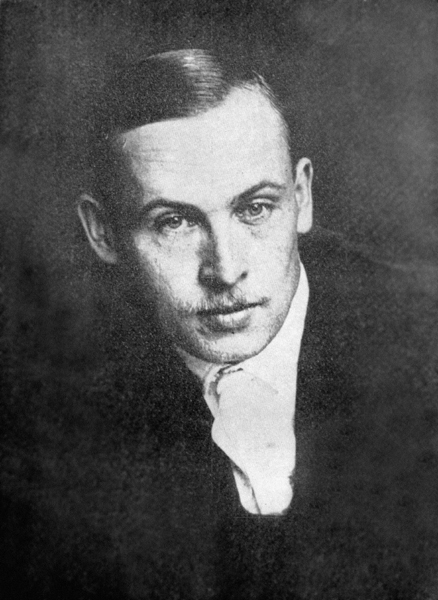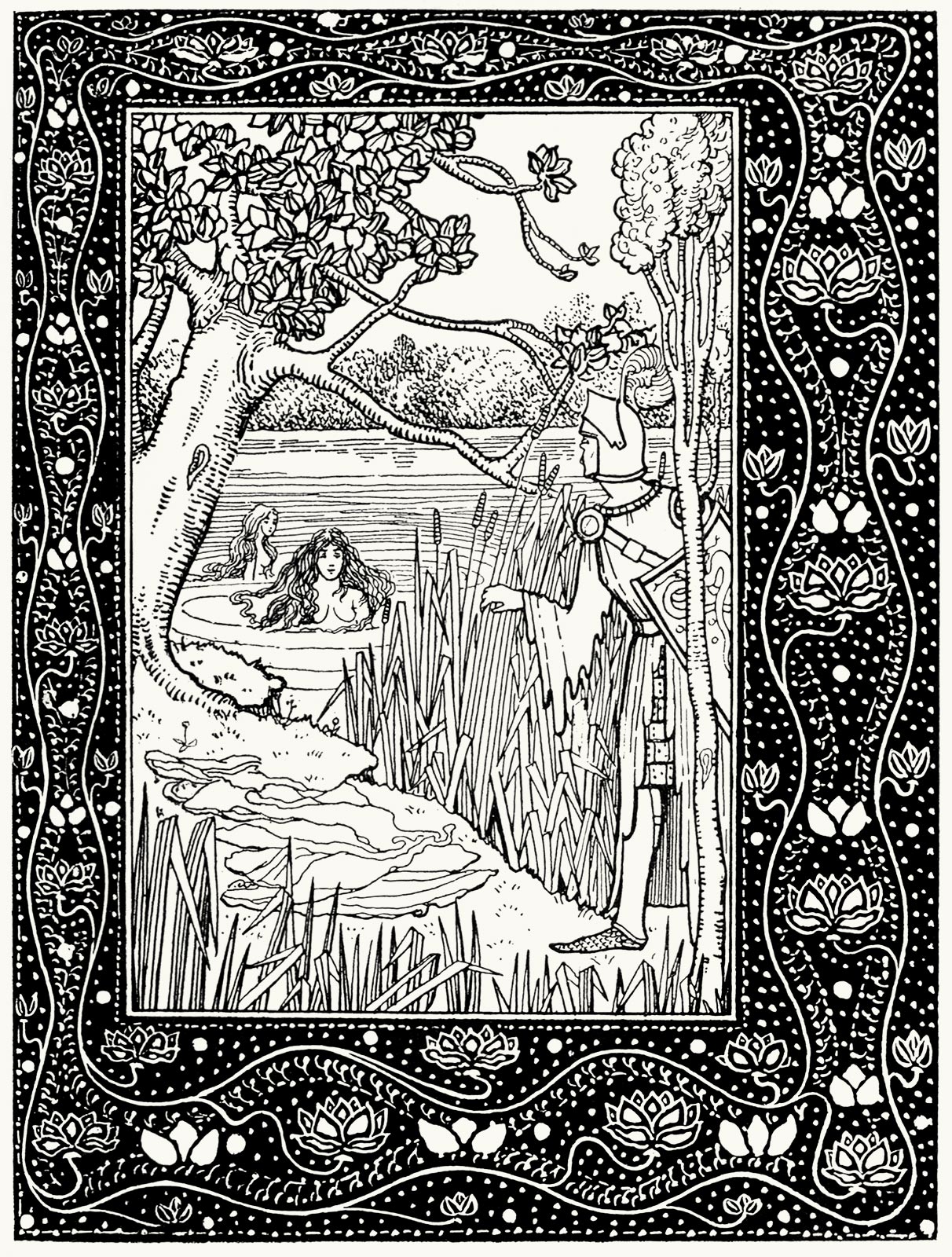|
Witold Wojtkiewicz
Witold Wojtkiewicz (29 December 1879, Warsaw – 14 June 1909, Warsaw) was a Polish painter, illustrator and printmaker. Although generally considered an Expressionist, some of his works are precursors of Surrealism. Biography He came from a family of eleven children. His father was the chief cashier at Bank Handlowy and did not support Witold's desire to become an artist. Nevertheless, he was able to enroll at the Warsaw school of drawing, where he studied with Jan Kauzik. After a brief attempt to study at the Imperial Academy of Arts, he continued at the Kraków Academy of Fine Arts from 1903 to 1904 with Leon Wyczółkowski; supporting himself by doing illustrations for the short-lived satirical magazine, ''Liberum Veto''.Brief biography @ Culture.pl [...More Info...] [...Related Items...] OR: [Wikipedia] [Google] [Baidu] |
Vignette (graphic Design)
A vignette, in graphic design, is a French loanword meaning a unique form for a frame to an image, either illustration or photograph. Rather than the image's edges being rectilinear, it is overlaid with decorative artwork featuring a unique outline. This is similar to the use of the word in photography, where the edges of an image that has been vignetted are non-linear or sometimes softened with a mask – often a darkroom process of introducing a screen. An oval vignette is probably the most common example. Originally a vignette was a design of vine-leaves and tendrils (''vignette'' = small vine in French). The term was also used for a small embellishment without border, in what otherwise would have been a blank space, such as that found on a title-page, a headpiece or tailpiece. The use in modern graphic design is derived from book publishing techniques dating back to the Middle Ages Analytical Bibliography (ca. 1450 to 1800) when a vignette referred to an engraved desi ... [...More Info...] [...Related Items...] OR: [Wikipedia] [Google] [Baidu] |
Artists From Warsaw
An artist is a person engaged in an activity related to creating art, practicing the arts, or demonstrating an art. The common usage in both everyday speech and academic discourse refers to a practitioner in the visual arts only. However, the term is also often used in the entertainment business, especially in a business context, for musicians and other performers (although less often for actors). "Artiste" (French for artist) is a variant used in English in this context, but this use has become rare. Use of the term "artist" to describe writers is valid, but less common, and mostly restricted to contexts like used in criticism. Dictionary definitions The ''Oxford English Dictionary'' defines the older broad meanings of the term "artist": * A learned person or Master of Arts. * One who pursues a practical science, traditionally medicine, astrology, alchemy, chemistry. * A follower of a pursuit in which skill comes by study or practice. * A follower of a manual art, such as a ... [...More Info...] [...Related Items...] OR: [Wikipedia] [Google] [Baidu] |
19th-century Polish Male Artists
The 19th (nineteenth) century began on 1 January 1801 ( MDCCCI), and ended on 31 December 1900 ( MCM). The 19th century was the ninth century of the 2nd millennium. The 19th century was characterized by vast social upheaval. Slavery was abolished in much of Europe and the Americas. The First Industrial Revolution, though it began in the late 18th century, expanding beyond its British homeland for the first time during this century, particularly remaking the economies and societies of the Low Countries, the Rhineland, Northern Italy, and the Northeastern United States. A few decades later, the Second Industrial Revolution led to ever more massive urbanization and much higher levels of productivity, profit, and prosperity, a pattern that continued into the 20th century. The Islamic gunpowder empires fell into decline and European imperialism brought much of South Asia, Southeast Asia, and almost all of Africa under colonial rule. It was also marked by the collapse of the l ... [...More Info...] [...Related Items...] OR: [Wikipedia] [Google] [Baidu] |
1909 Deaths
Nineteen or 19 may refer to: * 19 (number), the natural number following 18 and preceding 20 * one of the years 19 BC, AD 19, 1919, 2019 Films * ''19'' (film), a 2001 Japanese film * ''Nineteen'' (film), a 1987 science fiction film Music * 19 (band), a Japanese pop music duo Albums * ''19'' (Adele album), 2008 * ''19'', a 2003 album by Alsou * ''19'', a 2006 album by Evan Yo * ''19'', a 2018 album by MHD * ''19'', one half of the double album '' 63/19'' by Kool A.D. * '' Number Nineteen'', a 1971 album by American jazz pianist Mal Waldron * ''XIX'' (EP), a 2019 EP by 1the9 Songs * "19" (song), a 1985 song by British musician Paul Hardcastle. * "Nineteen", a song by Bad4Good from the 1992 album ''Refugee'' * "Nineteen", a song by Karma to Burn from the 2001 album ''Almost Heathen''. * "Nineteen" (song), a 2007 song by American singer Billy Ray Cyrus. * "Nineteen", a song by Tegan and Sara from the 2007 album '' The Con''. * "XIX" (song), a 2014 song by S ... [...More Info...] [...Related Items...] OR: [Wikipedia] [Google] [Baidu] |
1879 Births
Events January–March * January 1 – The Specie Resumption Act takes effect. The United States Note is valued the same as gold, for the first time since the American Civil War. * January 11 – The Anglo-Zulu War begins. * January 22 – Anglo-Zulu War – Battle of Isandlwana: A force of 1,200 British soldiers is wiped out by over 20,000 Zulu warriors. * January 23 – Anglo-Zulu War – Battle of Rorke's Drift: Following the previous day's defeat, a smaller British force of 140 successfully repels an attack by 4,000 Zulus. * February 3 – Mosley Street in Newcastle upon Tyne (England) becomes the world's first public highway to be lit by the electric incandescent light bulb invented by Joseph Swan. * February 8 – At a meeting of the Royal Canadian Institute, engineer and inventor Sandford Fleming first proposes the global adoption of standard time. * March 3 – United States Geological Survey is founded. * March ... [...More Info...] [...Related Items...] OR: [Wikipedia] [Google] [Baidu] |
Nowy Dziennik
''Nowy Dziennik'' (, in Polish: ''The New Daily'', in reference to New York), is a Polish-language newspaper, formerly a daily with the English subtitle ''Polish Daily News'', and now a weekly subtitled ''POLISH WEEKLY'', published in New York City once a week, by Outwater Media Group, based in Garfield, New Jersey (until June 2011 by Bicentennial Publishing). History ''Nowy Dziennik'' was founded in 1971 by Bolesław Wierzbiański (19132003), the journalist and first editor-in-chief. Over time, the paper has developed into the biggest and most respectable Polish daily in the United States. It is edited for the Polish diaspora. The first issue was released on February 27, 1971. Among the founders were Bolesław Wierzbiański, Rev. Edward Majewski from Lyndhurst, Bolesław Laszewski from New York, Rev. Franciszek Palecki from Philadelphia, Marian Święcicki from Dunellen, Rev. Michał Zembrzuski from Doylestown, and Edward Luka from Garfield. ''Nowy Dziennik'' covers all issues of ... [...More Info...] [...Related Items...] OR: [Wikipedia] [Google] [Baidu] |
Jerzy Ficowski
Jerzy Tadeusz Ficowski (; October 4, 1924 in Warsaw – May 9, 2006 in Warsaw) was a Polish poet, writer and translator (from Yiddish, Russian, Romani and Hungarian). Biography and works During the German occupation of Poland in World War II, Ficowski who lived in Włochy near Warsaw was a member of the Polish resistance. He was a member of the Home Army (Armia Krajowa, AK), was imprisoned in the infamous Pawiak and took part in the Warsaw Uprising of 1944. His codename was ''Wrak'' and he fought in Mokotów region. Following the Warsaw Uprising, Ficowski entered a camp with other survivors of the battle. After the war, Ficowski returned to Warsaw and enrolled at the university in order to study philosophy and sociology. There he published his first volume of poetry, ''Ołowiani żołnierze'' (The Tin Soldiers, 1948). This volume reflected the Stalinist atmosphere of the early postwar Poland, in which heroes of the Armia Krajowa Warsaw Uprising were treated with suspicion ... [...More Info...] [...Related Items...] OR: [Wikipedia] [Google] [Baidu] |
National Museum, Kraków
The National Museum in Kraków ( pl, Muzeum Narodowe w Krakowie), popularly abbreviated as MNK, is the largest museum in Poland, and the main branch of Poland's National Museum, which has several independent branches with permanent collections around the country. Established in 1879, the Museum consists of 21 departments which are divided by art period: 11 galleries, 2 libraries, and 12 conservation workshops. It holds some 780,000 art objects, spanning from classical archeology to modern art, with special focus on Polish painting. Location Kraków National Museum was first housed at the upper floor of the Renaissance Sukiennice building located at the Main Square in the Kraków Old Town, now home to one of its most popular divisions in the city. The construction of the Museum's contemporary ''New Main Building'' located at 3 Maja Street, started in 1934, but was interrupted by World War II. It was fully completed only in 1992, after the collapse of the Eastern Bloc. The collectio ... [...More Info...] [...Related Items...] OR: [Wikipedia] [Google] [Baidu] |




